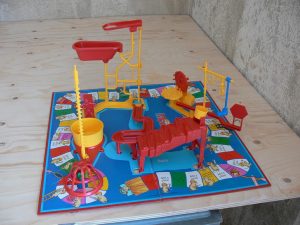Want IoT? Build a better mousetrap
Have you ever played the board game Mousetrap? It challenged players to trap their opponent’s mouse-shaped game pieces with the Rube Goldberg-styled contraption built during the game. If any piece of the trap was not perfectly set in place, the mousetrap would fail and the mouse would get away. I remember friends laughing uproariously when misaligned pieces caused the ball to come crashing down, knocking pieces about. But there were some of us who worked meticulously to ensure the proper alignment of each component, much like IoT engineers focused on building a successful architecture. We were in the game to win.
Monolithic, out-of-the-box IoT technologies may be too rigid
Large, complex IoT technologies can be a bit like that mousetrap, although it’s no laughing matter when any piece fails. Monolithic, proprietary IoT technologies, like a brand new gameboard, may work great initially out of the box. But over time, when the board warps or pieces suffer from dents or scratches, they can run into problems. If IoT components need to be added or upgraded, the architecture may not be able to handle the variances implied. Sometimes a new piece doesn’t align with the needs of other aspects of the infrastructure. Or perhaps there are unanticipated reactions by other components. Like a Mousetrap gameboard set on a wobbly table, the moment something is off, a chain reaction can lead to system failures.
That’s why those who are creating IoT systems today must work together to ensure proper alignment and interoperability. Each component developed not only needs to do its unique function well, but must also anticipate the requirements of other pieces. This enables everything to work properly in the context of a complete system and others that may tie into it, building responsive, modular pieces that can be easily exchanged in and out.
The catch and pitch: Knowing how to receive and what to hand off
Successful IoT architectures anticipate how everything fits together and build in the flexibility to accommodate change. They take compatibility and interoperability into account. They anticipate the need for adjustments.

Photo credit: Nottinghack on VisualHunt.com / CC BY-SA
Like the Mousetrap contraption, each component needs to anticipate what it receives from the previous machine and what it needs to pass on to the next. Each piece needs to catch the ball and give it to the next in a predictable way. Like a microservices approach, the individual component can be engineered to do whatever needs as a complete piece. But the component’s underlying structure must be sufficiently intelligent enough to cooperate with other pieces in the system.
Leading the way with industry collaboration
That sounds simple enough, right? If we’re talking about one specific implementation, it could indeed be simple. But we’re not. We’re talking about thousands of different applications. We’re talking about sensors, monitors and microcontrollers of varying types and manufacturers interfacing with edge analytics and back-end systems running different operating environments. And then there’s all the communications over private and public networks, point management systems, API’s, security and support systems. Some work well together — others won’t talk at all.
This is where leadership industry collaboration comes in. One company is not going to solve this IoT problem on its own. IoT’s success will hinge on the establishment of standards that enables connectivity and interoperability. The Eclipse Foundation is all about getting IoT and M2M developers to work together to understand the requirements of the pieces being built so that specifications can be developed to help others build compatible and interoperable products. Under its auspices, electronics and data center leaders, like Eurotech, Cloudera, Red Hat and Bosch, join on projects with manufacturing and vertical industry leaders, like Siemens, Deutsche Telekom, Nokia and others, to communicate their requirements and listen to the needs of others.
Given the power of the minds behind this, this is going to be one magnificent mousetrap.
All IoT Agenda network contributors are responsible for the content and accuracy of their posts. Opinions are of the writers and do not necessarily convey the thoughts of IoT Agenda.
